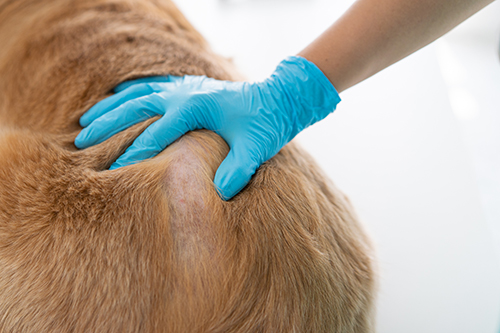
This article was updated on August 3rd, 2023
Unexplained hair loss in dogs can be worrying. In practice I most commonly see hair loss alongside itching due to allergies, parasites and infections – but various conditions can cause hair loss without itching. In this article, we’ll review the most common causes.
Common causes of hair loss in dogs (when your dog is NOT itchy)
1. Hormonal imbalances
In middle aged and older dogs, hormonal conditions like Cushing’s syndrome (hyperadrenocorticism) and hypothyroidism commonly cause symmetrical, bilateral hair loss, usually over the flanks and tail.
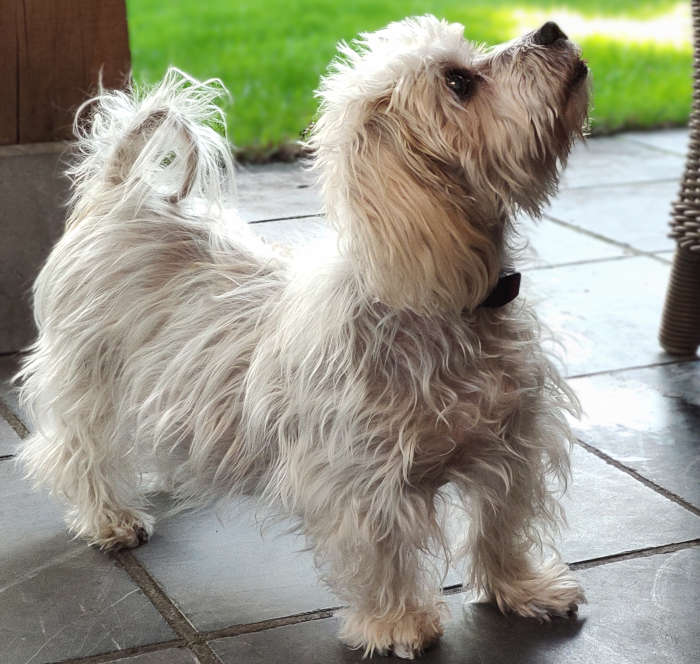
Other common symptoms include increased thirst and urination, lethargy, a pot-bellied appearance and weight gain. It’s important to work with your vet to rule out other causes and carry out the necessary blood tests to diagnose these conditions. Treatment in the form of lifelong oral medication is very effective and can allow the skin to recover.
Occasionally, steroid medication can cause ‘iatrogenic’ Cushing’s syndrome and result in hair loss, which should resolve if the dose is reduced (NB – it’s dangerous to stop steroid medication suddenly, so discuss this with your vet). Less common hormonal conditions like pituitary dwarfism can also cause hair loss. View more pictures of Cushing’s disease or learn about hormonal issues in dogs.
2. Demodectic mange (mites)
Caused by ‘Demodex’ mites, this form of mange is unusual as it typically doesn’t cause itching. Often seen in young dogs, the mites target hair follicles and cause severe patchy or generalized alopecia, often alongside hyperpigmentation (black spots), thickening of the skin or skin redness and scaling.
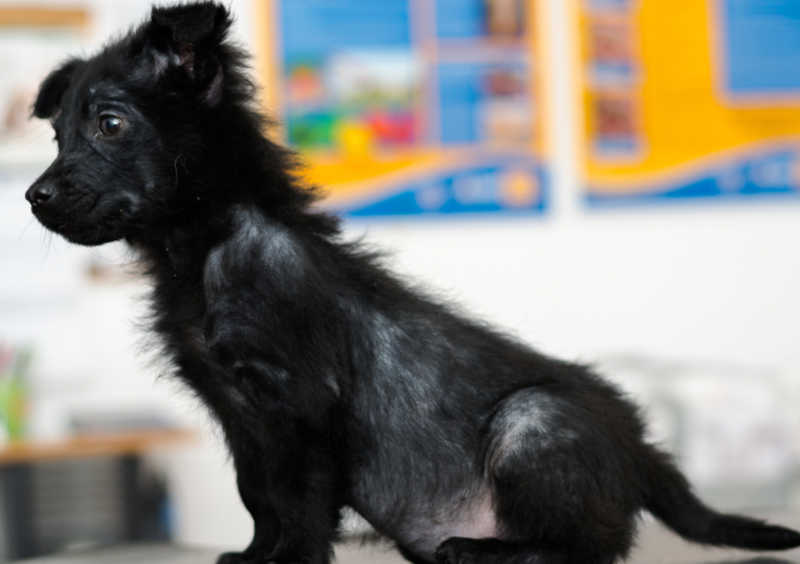
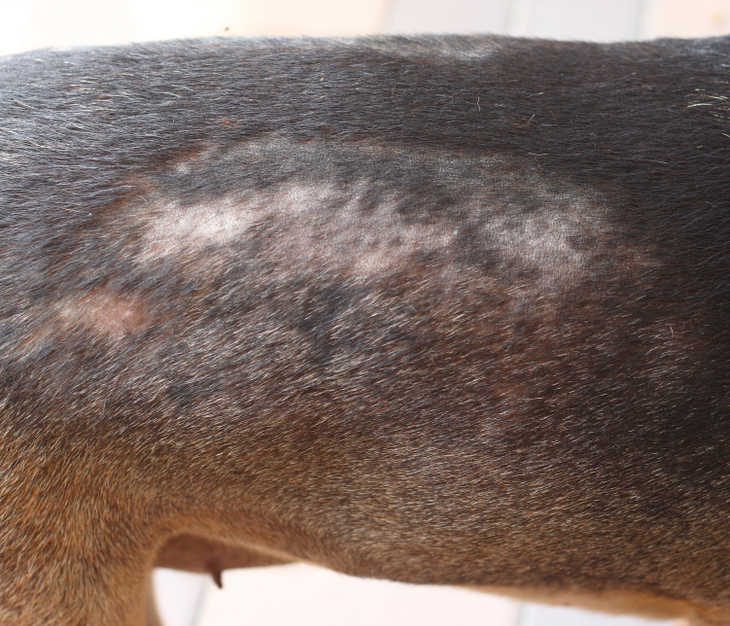
The mites are widely present in healthy dogs; it’s suspected that affected dogs are immunosuppressed, allowing them to proliferate excessively. Treatment, in the form of topical and/or oral medications, can take several months but is very effective.
Learn more about Mange (Mites) with pictures and treatment info.
3. Follicular dysplasias
These conditions affect hair growth, causing alopecia. While some are inherited, the exact mechanism of many isn’t fully understood. They include:
- Canine recurrent (seasonal) flank alopecia: symmetrical alopecia and hyperpigmentation that develop in winter, in many cases recurring yearly.
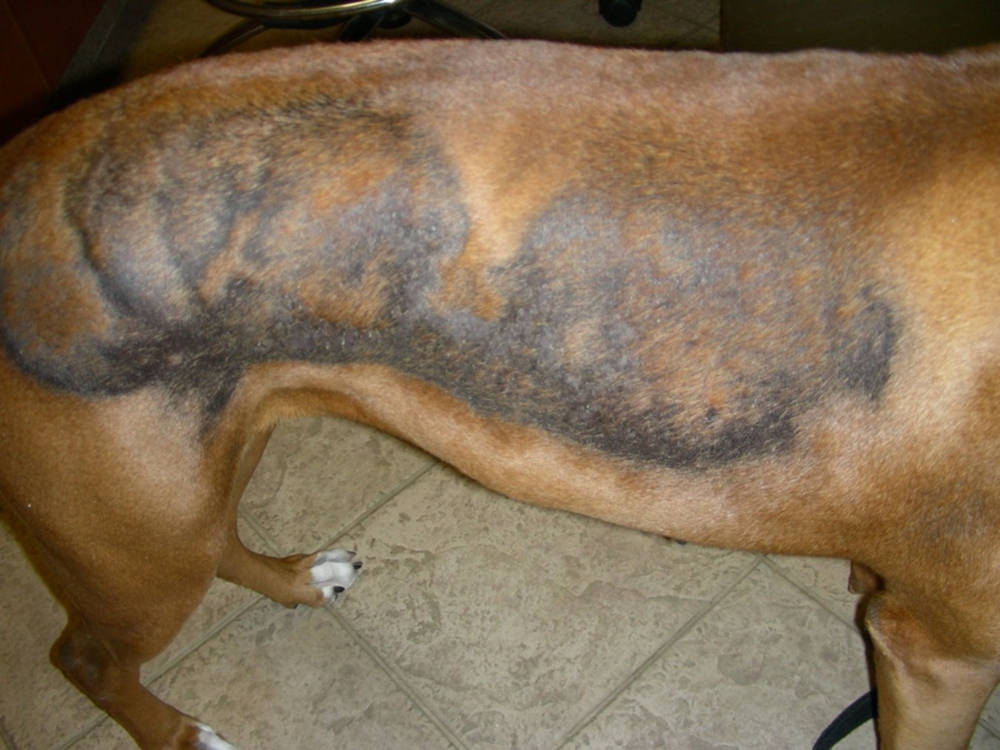
- Alopecia X: a range of disorders causing progressive alopecia, primarily affecting the body and tail and mainly seen in younger dogs.
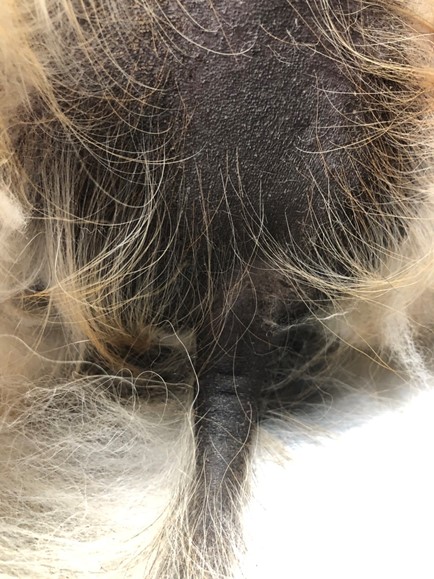
Photo: Ian Spiegel, DACVD
- Color dilution alopecia: mainly seen in blue and fawn colored dogs, causing progressive alopecia of dilute colored areas between 3 months and 3 years of age.
- Various breed-related follicular dysplasias.
These conditions aren’t curable but are typically a cosmetic problem only; in some cases medication or supplementation may improve symptoms.
4. Pattern alopecia
This relatively common inherited condition primarily affects the neck, chest and belly of short-haired breeds like smooth-coated Dachshunds. Progressive alopecia usually begins under 1 year of age (non-inflammatory, symmetrical hair loss). Occasionally, the ears are affected instead. Treatment is limited, but it doesn’t usually spread or cause other health issues.
5. Pregnancy, lactation and illness
The combination of hormonal changes and the nutritional demands of pregnancy and lactation (or a severe illness) can cause temporary hair loss; however, this should resolve with time.
6. Malnutrition
Insufficient nutrients can cause reduced hair growth. This isn’t an issue with complete dog foods but could be seen in dogs fed unbalanced or insufficient foods.
7. Friction
Tightly fitted collars or harnesses can cause alopecia due to repetitive rubbing, even if they’re not tight enough to cause visible inflammation. Always make sure your dog’s accessories fit well and adjust or replace them as needed.
8. Drug reactions
Occasionally, a localized area of alopecia may be seen after applying a topical medication like a flea treatment, or after a vaccine or other injection. If you notice this, you should report it to your vet; they can discuss the specific medication used and whether it’s worth changing it in future.
9. Increased shedding
If your dog’s coat seems fine but you’ve noticed heavy shedding, there are a few possible causes. This is normal in spring and fall for many thick coated dogs, triggered by warm weather. In acutely stressful situations – like visiting the vets – shedding is also increased due to adrenaline.
When to consult a veterinarian
If your dog is shedding more than usual but is otherwise well, it’s still worth mentioning increased hair loss to your vet at a regular check-up.
If you notice areas of complete alopecia, signs of inflammation, or other symptoms like increased thirst or weight changes, it’s worth seeing your vet sooner rather than later to get to the bottom of things.
Diagnosis
Diagnosis is based on clinical examination, history and further testing including skin scrapes for mites and blood tests for hormonal conditions. Conditions like follicular dysplasias are usually a diagnosis of exclusion.
Frequently Asked Questions
How can I determine if my dog’s hair loss is normal or excessive?
This varies a lot depending on the breed – but if you notice areas of very thin or absent hair, this suggests something more than normal shedding is going on.
Can certain breeds be more prone to hair loss without itching or scratching?
Definitely – many of the conditions above more commonly affect certain breeds. It’s hard to list them all here, but it’s worth looking into any health conditions associated with your dog’s breed.
Why does my dog lose hair but doesn’t itch?
Maintenance of a dog’s coat requires a continuous cycle of hairs being shed and new hairs growing. Any condition that affects the hair follicles can tip the balance in favor of hair loss, resulting in areas of thinning or even absent hair (alopecia). While scratching and chewing can certainly cause hair loss, this is far from the only cause.
References
H. Jackson; R. Marsella (Eds.) (2012), BSAVA Manual of Canine and Feline Dermatology (3rd ed., pp. 130–151). British Small Animal Veterinary Association.
Related posts:
Disclaimer: This website's content is not a substitute for veterinary care. Always consult with your veterinarian for healthcare decisions. Read More.



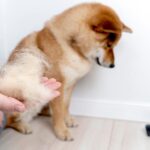
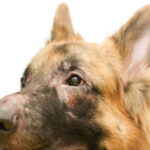
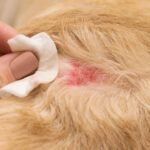
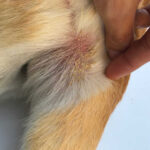
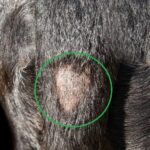

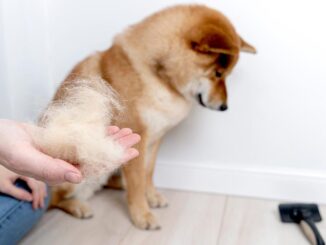
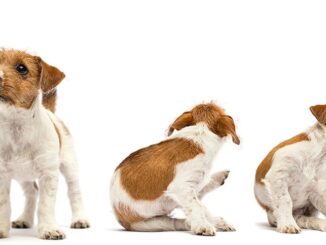
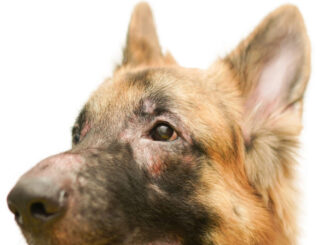
Be the first to comment